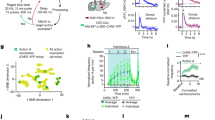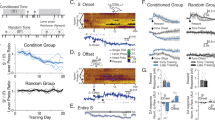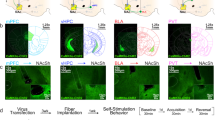Abstract
ACCORDING to Deutsch's theory1, the Olds effect2 of electrical self-stimulation is produced as a result of the concomitant simulation of both drive and reward pathways. If two such systems, one mediating drive and one reward, are indeed involved, the threshold stimulus intensities required to activate each might differ. If the drive system has a lower threshold than the reward system, then electrical stimulation of lesser intensity than that necessary to produce learning (where reward is also requisite) should prolong a habit which has already been learned, irrespective of the timing of the stimulation with respect to the performance of the habit. That is, the stimulation should prolong, say, bar-pressing, even if its administration is non-contingent on the act of pressing. If, on the other hand, such non-contingent stimulation is administered at an intensity above the threshold intensity necessary to produce learning, then a habit which the animal has already learned for intracranial stimulation should become weaker, since the animal will also be accidentally rewarded for other acts and so come to repeat these instead. Such learning of alternative habits should not occur when the non-contingent stimulation is of sub-threshold intensity for learning, and so there should be less interference with the original habit.
This is a preview of subscription content, access via your institution
Access options
Subscribe to this journal
Receive 51 print issues and online access
$199.00 per year
only $3.90 per issue
Buy this article
- Purchase on Springer Link
- Instant access to full article PDF
Prices may be subject to local taxes which are calculated during checkout
Similar content being viewed by others
References
Deutsch, J. A., The Structural Basis of Behavior (Univ. Chicago Press, 1960).
Olds, J., Science, 127, 315 (1958).
Author information
Authors and Affiliations
Rights and permissions
About this article
Cite this article
DEUTSCH, J., HOWARTH, C., BALL, G. et al. Threshold Differentiation of Drive and Reward in the Olds Effect. Nature 196, 699–700 (1962). https://doi.org/10.1038/196699a0
Issue Date:
DOI: https://doi.org/10.1038/196699a0
This article is cited by
-
Drive and Reinforcement Circuitry in the Brain: Origins, Neurotransmitters, and Projection Fields
Neuropsychopharmacology (2018)
Comments
By submitting a comment you agree to abide by our Terms and Community Guidelines. If you find something abusive or that does not comply with our terms or guidelines please flag it as inappropriate.



